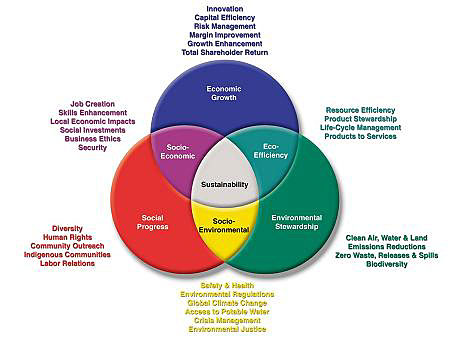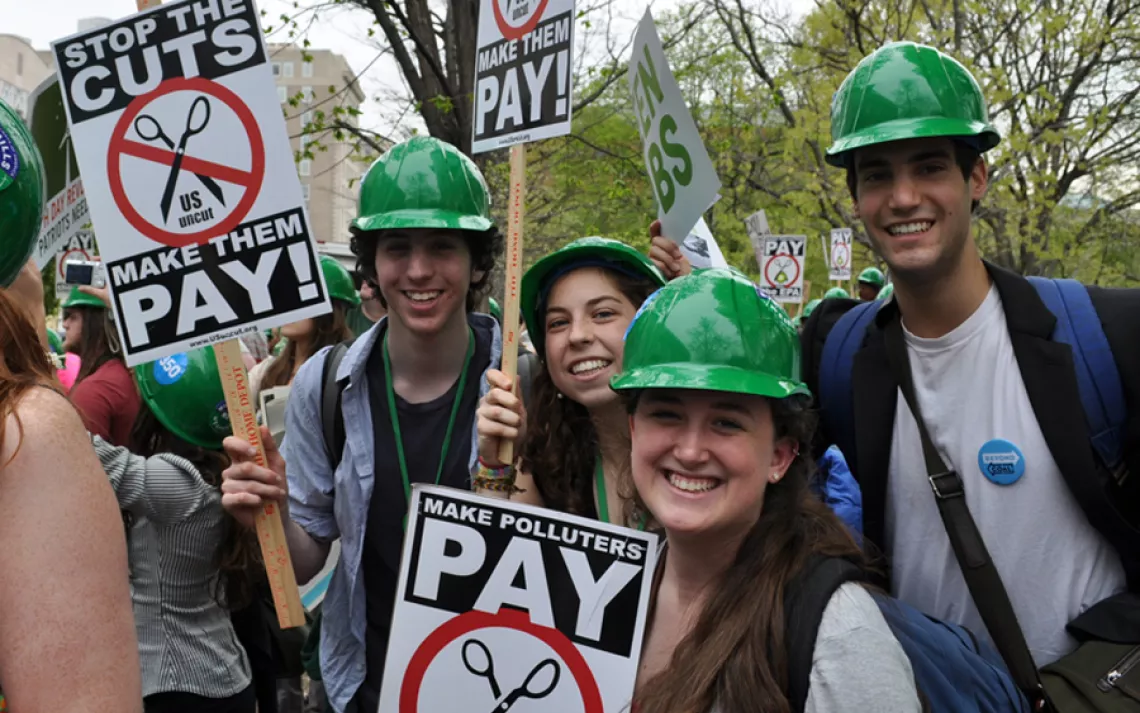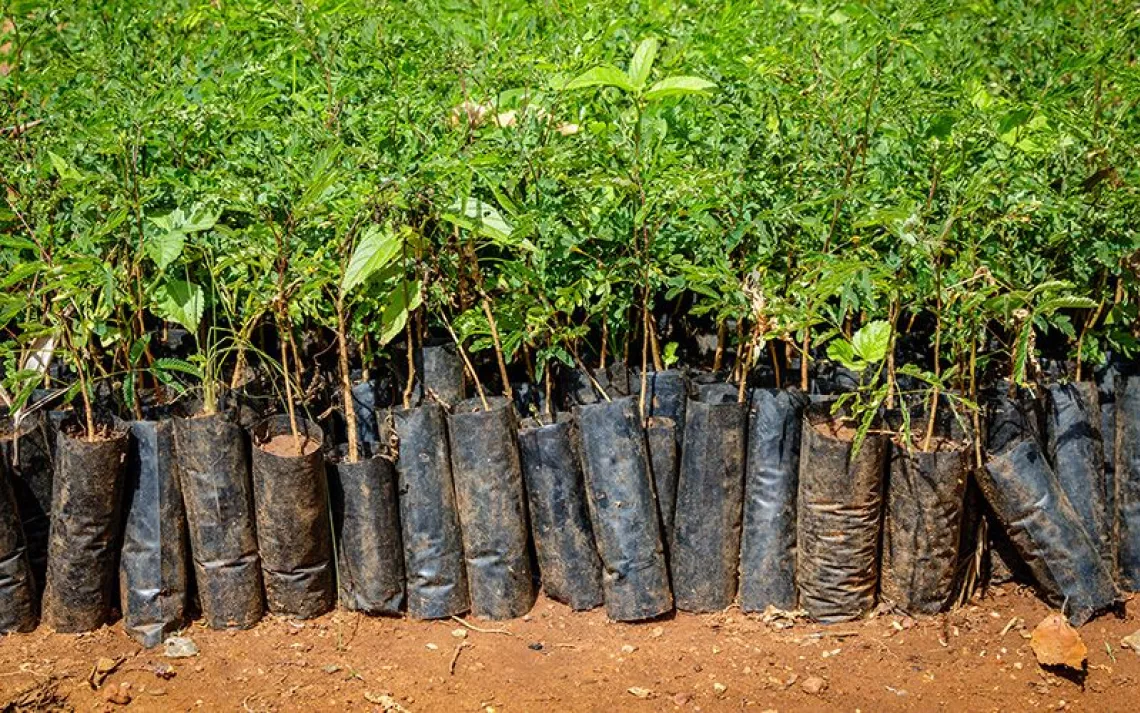When Greenies Go to Business School
MBA programs increasingly focus on a “triple bottom line": profits, people, and the planet

In recent decades, businesses have come to wield more power than ever before—the income of many multinational corporations now exceeds that of several countries. Of course, many companies’ single-minded focus on growth has led them to prioritize short-term profits over the longer-term health of planet and society. Because of this fallout, and because government is more and more limited in its ability to create change, citizens are increasingly calling on businesses to manage themselves in ways that benefit society.
Today, there’s a growing expectation that they should be beholden to multiple stakeholders—not just investors. Many of those businesses embracing that approach (Adidas, Nokia, Johnson & Johnson) are outperforming more traditionally managed organizations. As a business professor and former business executive, I believe that creating employment and delivering critical goods and services while also taking into consideration the welfare of people and the planet presents some of the most critical challenges—and exciting management opportunities—of our times.
That challenge comes down to a “triple bottom line”—one encompassing profits, people, and the planet. According to the Governance and Accountability Research Institute, 81 percent of Fortune 500 companies published a corporate sustainability report in 2015 (up from 20 percent in 2011). These reports track company progress on environmental performance—such as energy, water usage, and greenhouse gas emissions—and social performance—including workforce and supply chain working conditions, and workforce diversity.
As business management styles have evolved, so too, naturally, has business management education. Pioneered by Harvard University in 1908, the Masters in Business Administration (MBA) degree is designed to prepare graduates for senior business management roles. Most traditional MBA programs’ core curriculum includes courses on accounting and finance, human resources and organizational design, leadership, strategy, ethics, operations management, and marketing. The idea is that students are taught to manage these functions in the pursuit of shareholder profits.
 But now, focused MBA offerings are teaching students how to take into consideration multiple stakeholders. Such programs, often referred to as “Green MBAs” or “Sustainable MBAs,” address the triple bottom line of sustainability in their curriculum. As the graphic on the right shows, managing its many intersections can be complex—the desire to learn how to effectively do so is what drives many to pursue Sustainable MBAs.
But now, focused MBA offerings are teaching students how to take into consideration multiple stakeholders. Such programs, often referred to as “Green MBAs” or “Sustainable MBAs,” address the triple bottom line of sustainability in their curriculum. As the graphic on the right shows, managing its many intersections can be complex—the desire to learn how to effectively do so is what drives many to pursue Sustainable MBAs.
Another driver of sustainability-focused education is the belief among prospective students that it is essential. When Net Impact, a nonprofit membership organization for students and professionals working in the sustainability field, conducted a 2013 study of 3,300 graduate students, 91 percent of students polled said social and environmental issues were “very important” or “essential” to a business' long-term success, and 85 percent said they intended to tackle these issues while in graduate school. For prospective MBAs, opportunities to learn to manage businesses’ environmental and social impacts have gone from “nice-to-have” to "must-have.”
Colleges and universities around the world have responded to this demand—prospective graduate students can now choose from hundreds of Sustainable MBA options. These programs typically fall into two categories: those that have fully integrated sustainability, which have sustainability woven throughout their entire curriculum, and those that offer concentrations in it. Rather than a traditional MBA-level marketing course, a Sustainable MBA marketing course would explicitly explore ways to design products that minimize their environmental footprint, improve human or planetary health, and/or solve pressing societal needs. A well-designed Sustainable MBA program also encompasses “systems theory”—the study of how our economies and societies are dependent on the Earth’s systems.
In 2003, San Francisco’s Presidio Graduate School introduced one of the first fully integrated Sustainable MBA programs. Presidio’s hybrid model offers both online and on-site courses—students study online and meet once a month for four days (two days for part-time MBA students). The majority of students hail from within driving distance of Presidio’s San Francisco and Seattle campuses (Presidio recently acquired and incorporated what used to be known as Bainbridge/Pinchot University in Washington), which is perhaps why their backgrounds tend to reflect those relatively progressive cities’ main industries (tech, outdoor adventure, organic goods). As the demand for sustainability-based education has expanded into the nonprofit and governmental sectors, Presidio has broadened its offerings to include Sustainable MPA (Masters in Public Administration) dual degree and certificate programs.
In recent years, online MBA programs—which allow working adults to progress toward degrees on a flexible, part-time basis, and reduce their travel footprint—have become more commonplace. In 2006, Green Mountain College (GMC) introduced the first fully integrated, 100 percent online Sustainable MBA program. A natural extension of the college’s 20-year tradition of sustainability-focused education, the MBA program at GMC attracts students from around the world and across a broad range of industries.
“Our graduates include the director of social consciousness for a well-known women’s clothing designer, the head of food waste strategy for a global environmental nonprofit, and the CEO of a multi-million-dollar for-profit company,” says Jacob Park, PhD, program director of GMC’s Sustainable MBA. “We encourage students to use their capstone project as a launching pad to reach their post-MBA goals—students have launched new ventures and created sustainability positions within their organizations. One of our graduate’s capstone project won a Green Dot award.”
Those who choose to pursue a more traditional MBA at an established private or state university, can increasingly pursue sustainability-based concentrations, which can be industry-specific, or more general, like that offered at the University of Virginia’s Darden School of Business. Like most established business schools, Darden ascribes to a two-year curriculum model—all first-year students take the same core courses and in their second year, choose a concentration. Darden’s popular Innovation for Sustainability concentration provides students with knowledge about global impacts on natural systems from rising energy and material consumption patterns, guidance on how innovative sustainability practices can increase revenues and lower costs, and information regarding institutions and policy instruments that influence business operations.
“We are seeing a notable shift in the students coming into our MBA program,” says Michael Lennox, senior associate dean and chief strategy officer at Darden. “Our students are actively seeking to create value for society and make a positive impact. They’re more likely to have backgrounds and experience in entrepreneurial and nonprofit organizations, such as Teach for America, or government. And, they are more interested in working in smaller, entrepreneurial ventures and nonprofits.”
In terms of future trends, Professor Lenox says, “Sustainability is now ingrained into business. As companies evolve in terms of how they envision themselves—for example, becoming B (Benefit) Corporations—learning in the MBA program will need to evolve to be more integrative, more experiential, and more team-based. They’ll also have to teach students how to deal with complex issues, such as climate change, social entrepreneurship, and impact investing.”
Most seek MBA degrees in preparation for senior management level positions in the public and private sectors and/or to launch or grow their own ventures. Common career paths for Sustainability MBAs include logistics (streamlining supply chains to make them more cost-effective, efficient, and environmentally-friendly), environmental consulting (emphasizing the importance of minimizing environmental impact and creating community-behooving opportunities while generating high profits), operations (optimizing day-to-day protocol to address companies’, organizations’, and government agencies’ energy inefficiencies), and executive level management. After all, companies increasingly seek chief sustainability officers to forge long-term triple bottom line-based objectives, strategies, and policies.
No matter how Sustainability MBAs put their degrees to use, it’s safe to say the objective is the same—to make a difference, while making a living.
 The Magazine of The Sierra Club
The Magazine of The Sierra Club



